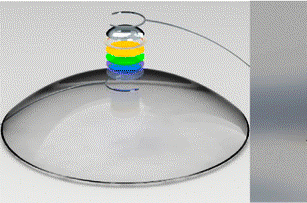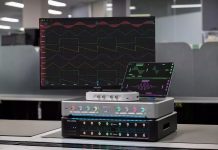A team of researchers from Princeton University, led by mechanical and aerospace engineering professor Michael McAlpine from the University’s McAlpine Research Group has developed a 3D printer that prints quantum dot LEDs, or QD LEDs – the next step up from OLED.

The researchers spent about six months and between $10,000 and $20,000 assembling the printer.
Now, with this new 3D printing technology, the lab has shown the capability of printing “emissive semi-conducting inorganic nanoparticles, elastomeric matrix, organic polymers as charge transport laters, solid and liquid metal leads and a UV-adhesive transparent substrate layer cube of encapsulated LEDs,” according to their report.
The printed LEDs have five layers: a silver nanoparticles metal ring on the bottom serves as a metal contact to an electrical circuit; two polymer layers on top of the ring serve to supply and shuttle electrical current to the next layer; the quantum dots are in the next layer and are made of cadmium selenide nanoparticles wrapped in a zinc sulfide shell; as the electrons bump into these quantum dots, they emit orange or green light which is topped off with a cathode layer made of eutectic gallium indium, through which the electrons flow out of the LED.
“To date, 3D printing has been limited to specific plastics, passive conductors, and a few biological materials. Here, we show that diverse classes of materials can be 3D printed and fully integrated into device components with active properties. Specifically, we demonstrate the seamless interweaving of five different materials, including (1) emissive semiconducting inorganic nanoparticles, (2) an elastomeric matrix, (3) organic polymers as charge transport layers, (4) solid and liquid metal leads, and (5) a UV-adhesive transparent substrate layer,” it says in the report.
The ultrathin, flexible and transparent QD LEDs are brighter and have purer colour at a lower power consumption rate using cadmium selenide nanocrystals.
“The conventional microelectronics industry is really good at making 2D-electronic gadgets. With TVs and phones, the screen is flat. But what 3D printing gives you is a third dimension, and that could be used for things that people haven’t imagined yet, like 3D structures that could be used in the body,” McAlpine told CNET.
The venture was sponsored by the Air Force of Scientific Research and the Defence Advanced Research Project Agency.


















